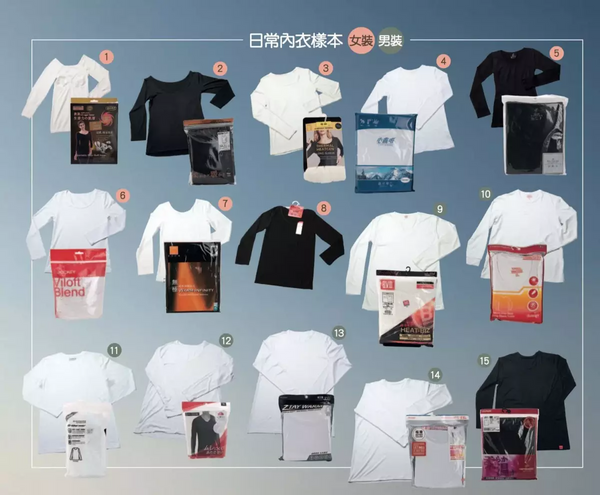2月 02, 2025
The Consumer Council has put 20 different types of thermal wear to test, turns out the cheaper options can be more give you more warmth! Before delving into Consumer Council's report, let's take a look at how thermals work.
How heat functions? Our bodies lose heat in a few ways: 1) conduction (heat is transferred from a warmer solid object to a cooler solid object; this is the second law of thermodynamics), 2) convection (heat is transferred from your body to a liquid or gas) and 3) evaporative cooling (the process of a liquid changing state into a gas takes energy, in the form of heat, from its surroundings).

Although thermal wears provide some insulation (conduction and convection), their main job is to fight evaporative cooling. A quick example of evaporative cooling: blow across the back of your hand, lick it, and blow again. The wet feels much cooler🥶. As the water evaporates, it draws energy in the form of heat away from the skin. Thermals draw moisture / sweat away from the skin, minimising evaporative cooling.
The Consumer Council has tested 20 men and women long-sleeved thermal underwear from $99 to $559. Among them, 15 are for daily wear (including Uniqlo, Giordano, Baleno, Martha, Chicken Mark) and 5 are for sports / outdoor activities wear (including The North Face, Columbia). The test focus on: heat retention, water vapour permeability, perspiration and quick-dry performance and durability.

 (Source: Consumer Council)
(Source: Consumer Council)
The report stated that the thermal retention value of the test samples varies greatly. Among the 15 daily wear samples, Baleno Thermal Extra has the highest thermal retention value, with an average of 0.23 clo (ranking at #3 among all samples), while Uniqlo Heattech Extra Warm scored 0.17 clo (ranking at #9 among all samples) only.
Among the 5 sportswear samples, the better performances include Wed’ze Fresh Warm Women’s and mont-bell Zeo-line Middle Weight Round Neck Tee Women’s (ranking at top 2 among all samples). Surprisingly, Columbia Omni-heat Midweight Stretch Baselayer and Thermowave have the lowest thermal retention value, measured at only 0.10 clo (ranking at the bottom among all samples). The difference between the test samples of the highest and lowest thermal retention values (from 0.1 clo to 0.32 clo) is more than twofold.
 (Source: Baleno)
(Source: Baleno)
 (Source: Uniqlo)
(Source: Uniqlo)
 (Source: Marks & Spencer, M&S)
(Source: Marks & Spencer, M&S)
The report regarding the thermal retention value contained herein comes from the Consumer Council's issue 495 of Choice monthly magazine. Content is for reference only.
#保暖內衣 #保暖原理 #消委會 #到校體驗 #到校工作坊 #STEM #STEAM #EDB
Comments will be approved before showing up.
